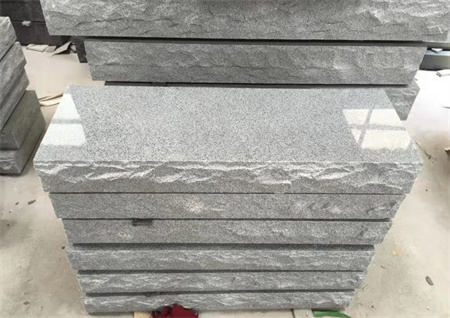The Spiritual Connection Between Granite and Eternal Rest

The Spiritual Connection Between Granite and Eternal Rest
Granite, a stone revered for its strength and durability, has long been associated with notions of eternity and permanence. Whether found in the towering peaks of mountains or crafted into the intricate gravestones that dot cemeteries across the world, granite holds a unique place in both nature and human tradition. Its dense structure and timeless appeal make it the perfect symbol for something as profound as eternal rest. But what is it about this stone that evokes such deep connections to the spiritual and the afterlife?
At its core, granite is a natural product of the Earth, born from the intense pressures and high temperatures deep within the planet’s crust. This process, slow and meticulous, mirrors the cycles of life and death, highlighting the impermanence of life yet the resilience of the soul. Granite’s very creation — a slow metamorphosis over millions of years — suggests an enduring strength that withstands the test of time. For many, it represents the lasting bond between the living and the deceased, transcending physical death to become an eternal marker of those who have passed.
The spiritual significance of granite begins with its elemental nature. Composed mostly of quartz, feldspar, and mica, granite is a blend of materials that, in their natural forms, exist in balance and harmony. This unity of components mirrors the idea of wholeness and the seamless connection between body, spirit, and earth. Its coarse, often reflective surface, while rugged and unyielding, can also be symbolic of the purity and clarity of a soul that has moved beyond earthly concerns.
For centuries, granite has been the material of choice for monuments, gravestones, and memorials. This tradition is not just about choosing a stone because it lasts; it’s about the deep symbolism that such permanence offers. In many cultures, the tombstone is a final tribute, a reminder of the life that once was, and granite’s indestructible nature ensures that the memory of a loved one can endure for generations. It is said that in times of sorrow, the cold, unwavering presence of a granite monument provides comfort — a physical manifestation of the idea that while life is fleeting, love and memory can endure. The weight of granite reflects the gravity of loss, and its endurance speaks to the hope that the soul, like the stone, can achieve a form of immortality.
In various religious and cultural traditions, stones — and granite, in particular — are seen as conduits to the divine. Their natural composition, shaped by forces beyond human control, ties them to a higher power, offering a link between the earthly and the heavenly. Many cultures believe that the spirits of the deceased remain connected to the material world, and it is through the stone, the monument, that these spirits are honored and remembered. The stone is not merely a marker but a bridge — a sacred place where the living can gather and remember, reflect, and pray.
Even the color and texture of granite play a role in its spiritual significance. The deep, rich hues of granite, from the greys of ash to the blacks and whites streaked with veins of gold or red, evoke a sense of reverence and quiet reflection. The stone’s natural patterns remind us of the complex beauty of life itself, with its countless interwoven experiences and stories. Some might say that the roughness of the granite’s surface mirrors the trials of life, while its polished finish symbolizes the peace and clarity achieved in the afterlife.
In times of mourning, granite also represents a sense of connection to the Earth, grounding the living in the reality of the cycle of life and death. As the stone comes from the Earth and ultimately returns to it, it embodies the idea of closure and transformation. The body may be gone, but the spirit remains, encased within the monument, a lasting tribute to the journey of a life well lived.
Granite also brings an unspoken sense of peace. Standing in front of a granite memorial, there is a palpable sense of stillness — a feeling of permanence amidst the chaos of the world. This stillness allows for reflection, remembrance, and, ultimately, acceptance. The stone is a reminder that even in our most fleeting moments, there is an inherent continuity, an unbroken connection between the physical and spiritual realms.
In the end, the connection between granite and eternal rest is more than just symbolic. It is a testament to humanity’s ongoing search for meaning, a desire to honor those who have gone before, and a recognition of the spiritual dimensions of life, death, and memory. The lasting presence of granite, etched with the names of the departed, serves as a reminder that though time moves forward, there are things in life that transcend it — the memories, the love, and the spirits that remain with us long after the physical body has returned to the earth.
